When planted naturally, ash trees are known to be relatively easy to take care of. This transfers to the art of Bonsai. As a whole, ash Bonsai are easier to care for than other types of Bonsai trees. But what are the different varieties of ash trees? What should you know to properly care for these trees?
Here is everything you need to know about taking care of ash Bonsai trees!
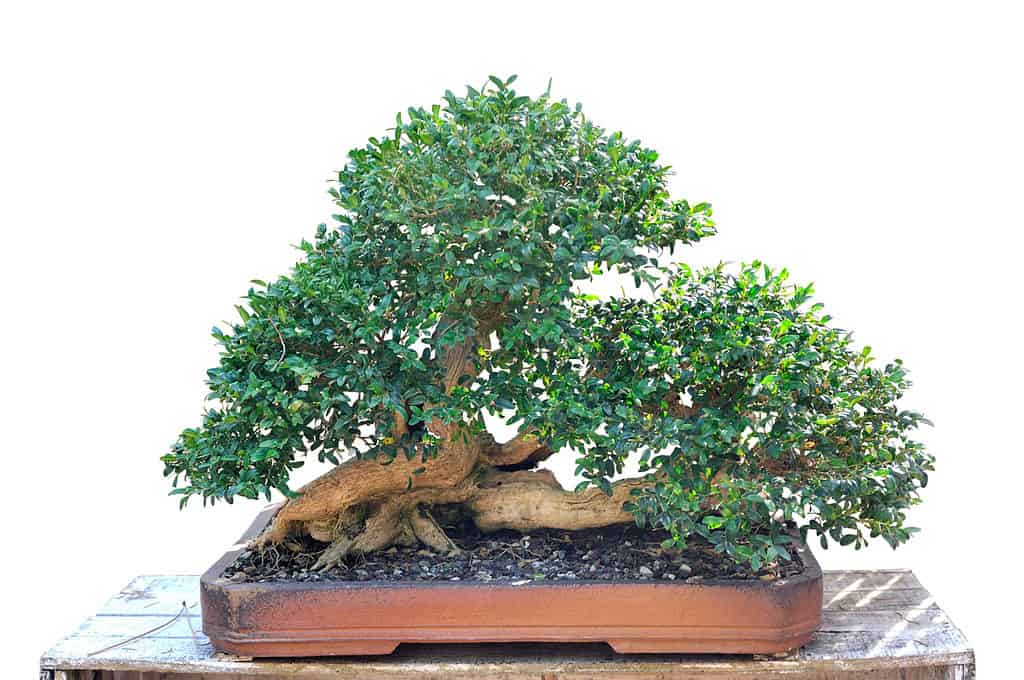
Most ash Bonsai tree varieties are closely related to the European ash tree.
©Gilles Paire/Shutterstock.com
| Ash Bonsai Tree Facts | |
|---|---|
| Botanical Name | Fraxinus |
| Common Types | black ash, green ash, white ash, blue ash, California ash, Carolina ash, European ash, narrow leaf ash |
| Sunlight | Full sun to partial shade, four to six hours a day |
| Soil | Depends on the specific type of ash tree; most ash trees can tolerate different kinds of soil and different soil conditions |
| Water | Moist and well-drained. Ash trees do not like constant wetness nor dryness! |
| For Beginners? | Yes! Ash Bonsai trees are easier to take care of than others. |
| Indoors or Outdoors? | Both, depending on the hardiness of the specific type of tree |
| Pairs Well With… | Moss and other natural ornamentation. |
Common Types of Ash Bonsai Trees
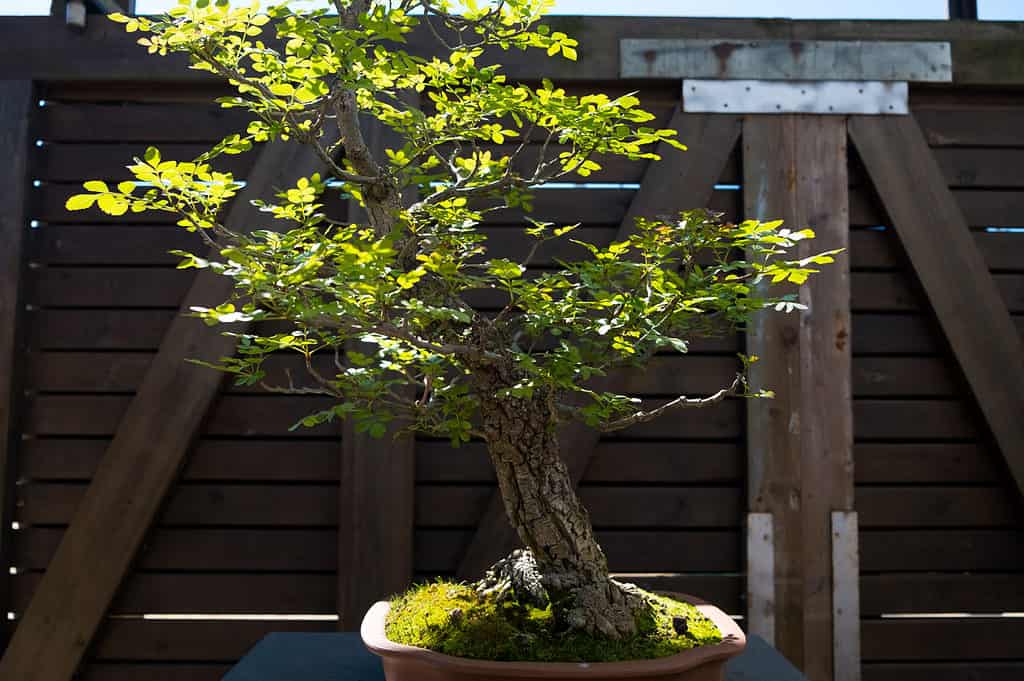
The strong wood of the average ash Bonsai tree may be more difficult to shape than average.
©davide bonaldo/Shutterstock.com
There are 50 different types of ash trees, all belonging to the olive family. Between the different types of ash trees, most of them have varied appearances. Here are some of the most common!
Black Ash
The Black Ash tree is native to Eastern Canada, down through the northeastern United States. These trees have been known to live for decades. Some have even lived to be 250 years old! They grow well in wet and cold environments. As a whole, these trees prefer full sun and can tolerate different types of soil.
Green Ash
Green Ash trees are native to North America. They are hardy, fast-growing trees. They prefer full sun and well-draining soil that is acidic to alkaline though they can tolerate many different types of soil.
White Ash

Your ash Bonsai tree may lose its leaves in the winter.
©Walter Pall/Shutterstock.com
The White Ash tree is native to North America. They grow at a moderate rate and prefer full sun for at least 4 to 6 hours a day. They can thrive in all different types of soil, whether that soil is clay, acidic, alkaline, or anything else, as long as it is wet and well-draining. In April, these trees bloom flowers that range from green to purple in color.
Blue Ash
The Blue Ash tree is native to North America. Out of all the ash trees, the blue ash has one of the slowest growth rates. These trees prefer full sun and well-drained sandy loam soil. In the spring and summer, these trees bloom flowers that are purple in color. They can tolerate high temperatures and humidity, as well as extremely cold winter temperatures.
California Ash
California Ash trees are native to the western United States, specifically the states of California, Arizona, Utah, and Nevada, as well as Baja California. These trees look very different from most other ash trees, as they look more like shrubs than trees. They bloom white, fragrant flowers in the spring. California ash trees prefer full sun though they can tolerate partial shade, as well as many different kinds of soil.
Carolina Ash
Native to North and South Carolina, Carolina ash trees tend to grow naturally in swampy areas. Unlike most other ash trees, these trees do well in the shade. They also prefer acidic soil. In the spring, before the leaves begin to appear, flowers bloom. They are yellow in male Carolina ash trees and green in female Carolina ash trees. These trees also produce large amounts of pollen.
European Ash
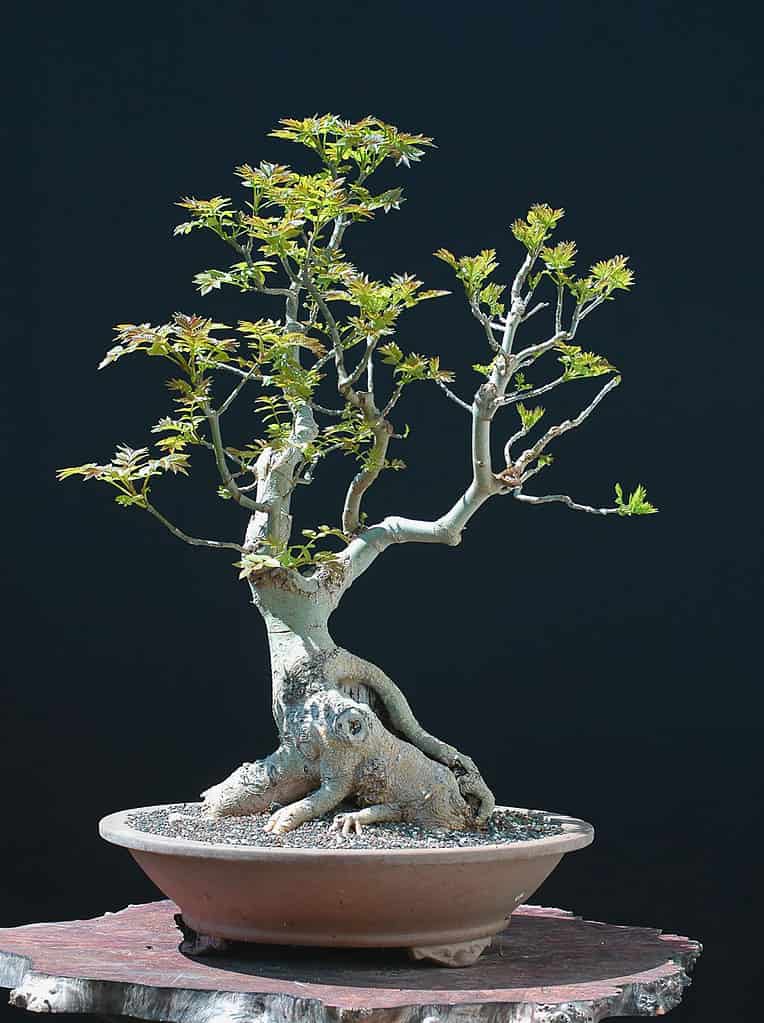
Ash bonsai trees belong to the olive tree family.
©Walter Pall/Shutterstock.com
Also known as the common ash, European ash trees are native to and found in Europe. They prefer cool, humid environments. These trees do best in full sun and moist, well-drained loam soil, though they can tolerate different kinds of soil too. They bloom white flowers in late spring.
Narrow Leaf Ash
Narrow-leaf ash trees are native to southwest Asia, southern to central Europe, and northwest Africa. They prefer full sun. In the spring, yellow and green flowers bloom on these trees.
Caring for Your Ash Bonsai Tree
Even though ash Bonsai trees are among some of the easiest Bonsai trees to take care of, there are still certain care requirements you should follow to make sure your tree grows its best! We’ll go into detail below about how to take care of your ash bonsai tree.
Sunlight
As a whole, most ash trees prefer full sun. Though there are some that tolerate partial shade, and very few that actually thrive in shady conditions.
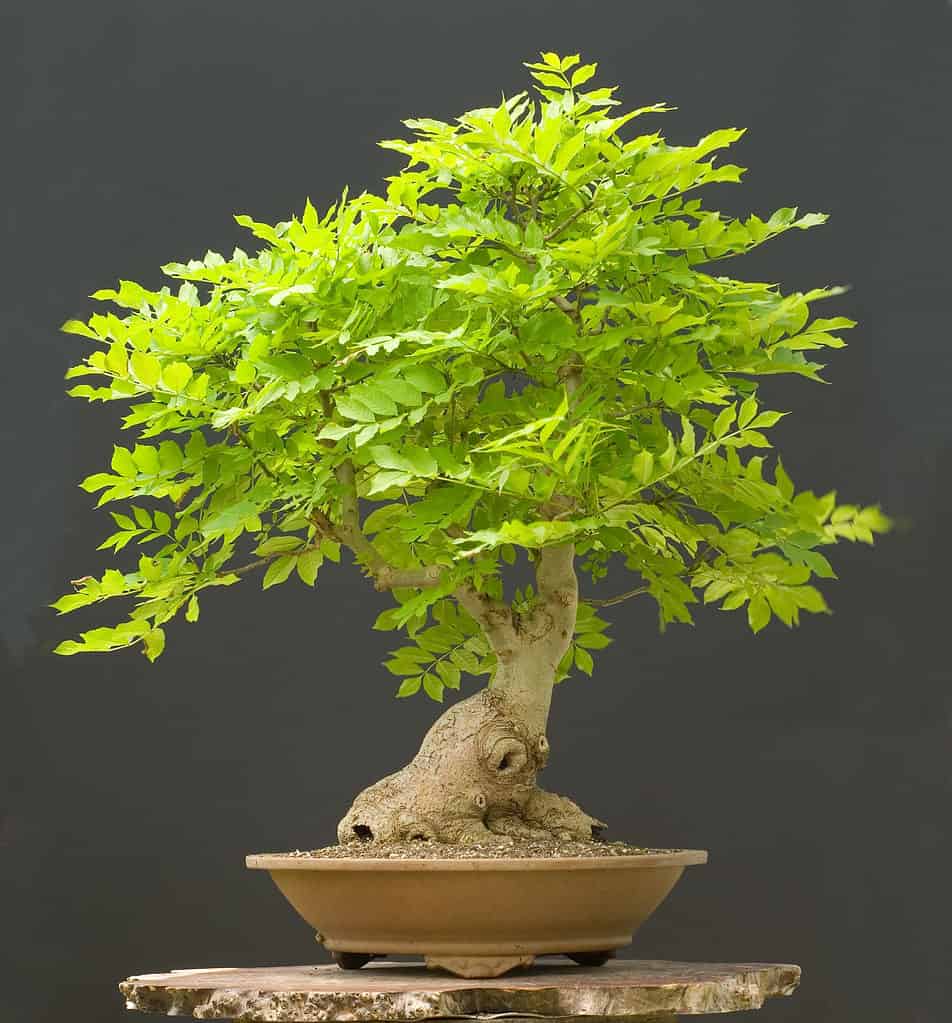
Some ash Bonsai trees work well for beginners.
©Walter Pall/Shutterstock.com
Soil Type
For the most part, a large number of ash trees seem to tolerate different kinds of soil. Many ash trees do best in soil that is well-draining. This is easy to achieve if you use the kind of soil required for Bonsai trees. Bonsai trees need these special soil mixtures in order to grow their best. These mixtures often include a combination of organic soil matter, pumice, Akadama, and lava rock. They are designed to be well-draining!
Water
As soon as the soil of your ash Bonsai tree dries, it should be watered again. Finding a balance between overwatering and underwatering is key. Ash trees do not like perpetual wetness nor prolonged periods of drought. You can also use rainwater and tap water to water your ash Bonsai trees since ash trees can tolerate even poor water quality.
Placement
Some ash trees are known to be especially hardy when it comes to cold winter temperatures. Others are able to withstand hot temperatures. A few kinds of ash trees need humidity, while others can do without it. Make sure you know what type of ash tree you have so that you know exactly where to place it so it can grow well.
Pruning Your Ash Bonsai Tree
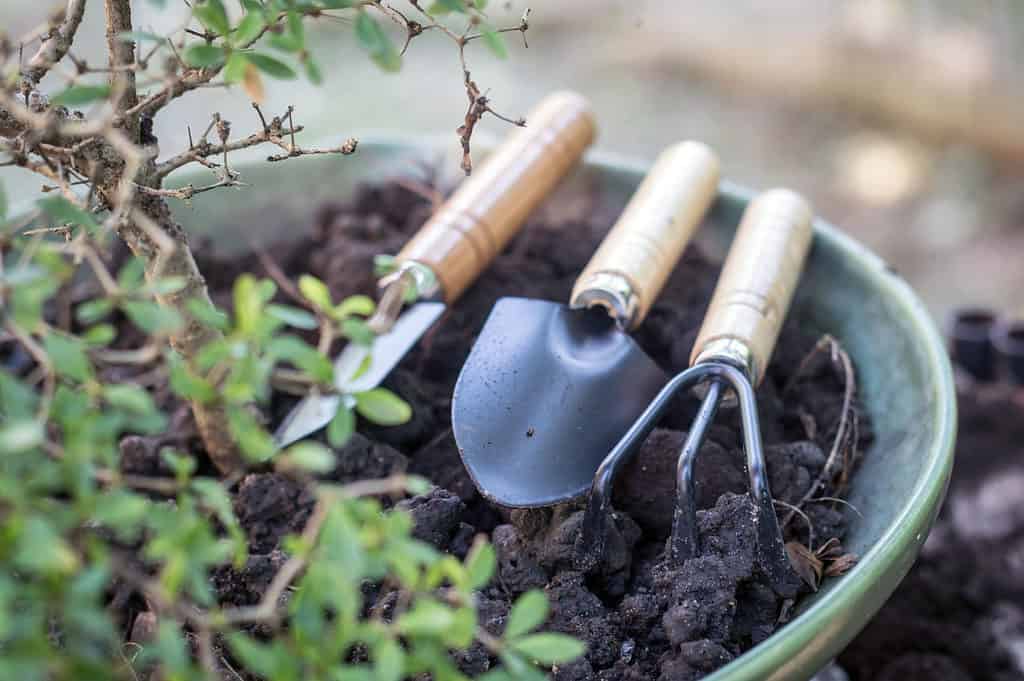
Your Bonsai tree may need certain tools for repotting and transplanting.
©wonderisland/Shutterstock.com
Pruning a Bonsai tree can be scary at times. To make sure your Bonsai tree continues to grow properly, you have to know when and where to prune your tree. Ash Bonsai trees are no different, but as a whole, they are easy to prune.
Since they grow quickly, and often thickly, you’ll want to prune your ash Bonsai tree often. When pruning consistently, make sure to not take too much off of the tree. To prune large branches, it is best to wait until late autumn.
Ideal Ash Bonsai Tree Styles
For the most part, ash Bonsai trees are easy to style and you can style them in a number of ways. Any upright styles are easy to try, such as Chokkan, Sokan, and Shakan styles.
Propagating Your Ash Bonsai Tree
Ash Bonsai trees can easily be propagated from the cuttings and seeds of healthy ash trees! Make sure any cuttings are no more than 5 inches in length and plant them in a shallow container.
Common Problems with Ash Bonsai Trees
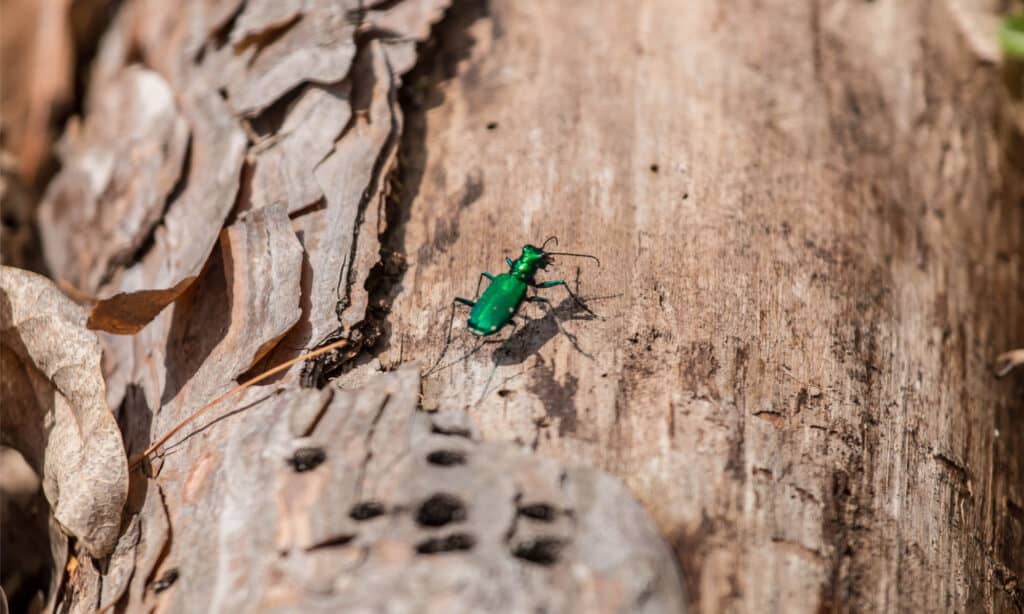
Emerald Ash Borers are named for the brilliant emerald color of their wings and shells.
©iStock.com/Donald Bilski
Unfortunately, ash trees are susceptible to different pests, insects, and diseases. In fact, there is a beetle called the emerald ash borer that has been devastating ash trees across the United States lately. Because of this, and other issues, make sure to be checking in on your ash Bonsai tree often. They can fall victim to other pests such as:
- spider mites
- caterpillars
- aphids
Diseases that can harm your ash Bonsai tree are leaf-spot fungus, rust, and mildew.
To combat these issues, you can use pesticides though it might help in the long run to consult professionals when you aren’t sure what to do.
The photo featured at the top of this post is © Gilles Paire/Shutterstock.com
Thank you for reading! Have some feedback for us? Contact the AZ Animals editorial team.






